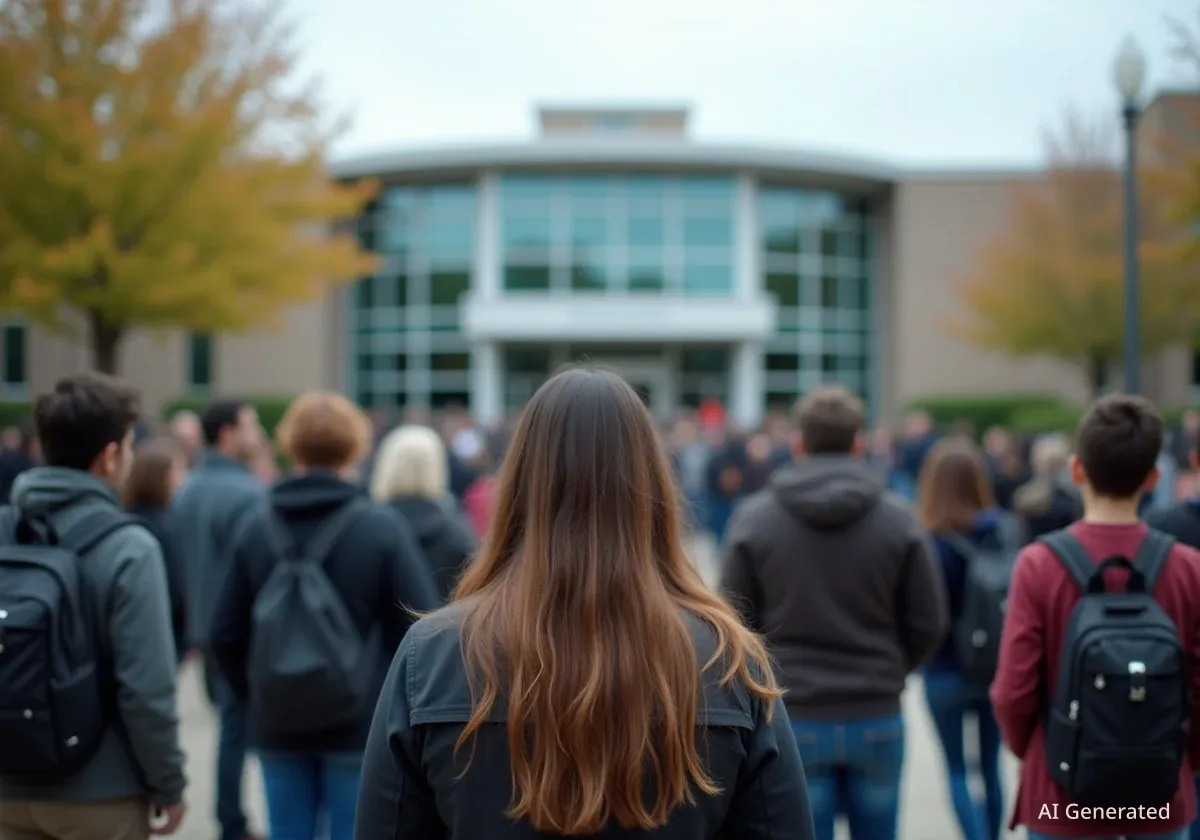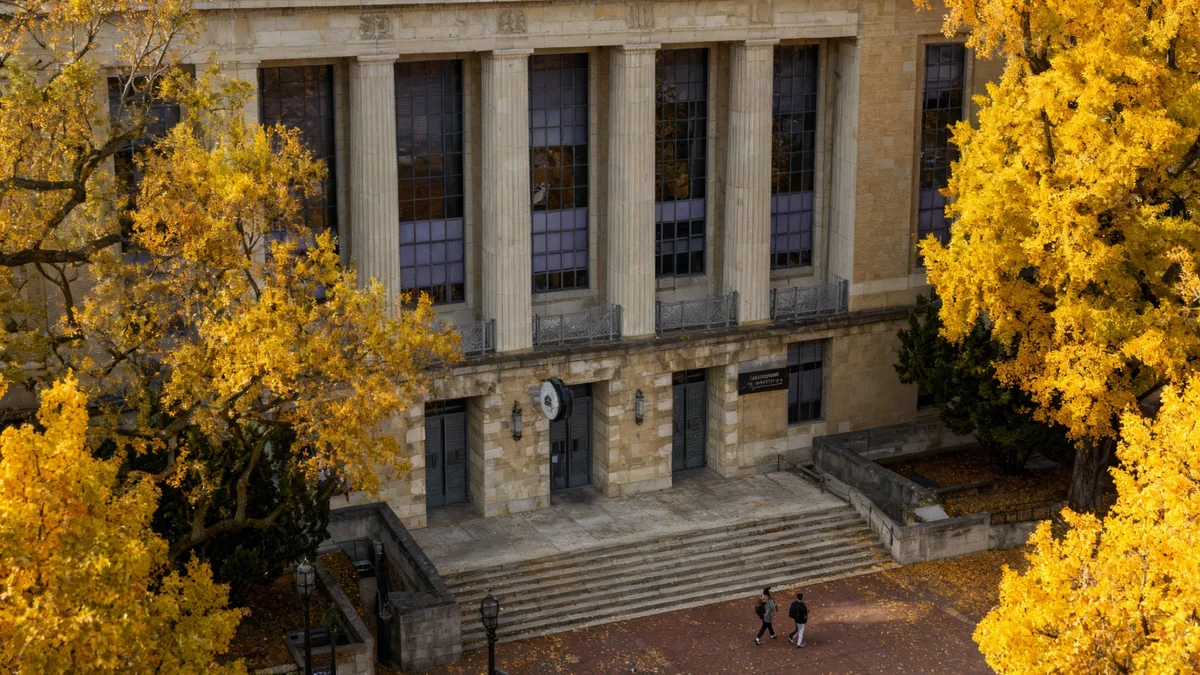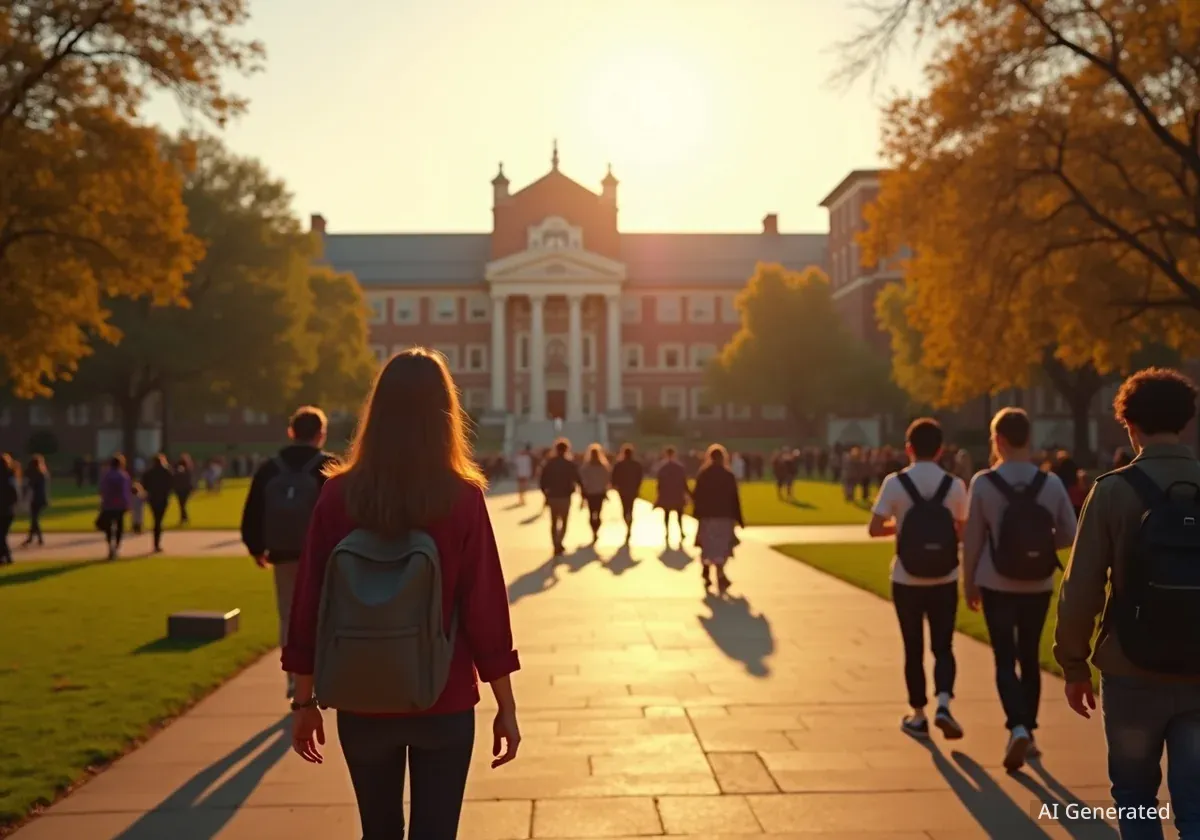A growing movement among parents and local leaders is pushing to divide Utah's Granite School District, one of the largest in the nation. Citing concerns over a lack of representation and bureaucratic inefficiency, communities on the eastern side of the Salt Lake Valley are calling for a feasibility study to explore creating a new, smaller school district.
The issue has become a central topic in local politics, particularly in the Holladay mayoral race, as residents in affluent areas question whether the sprawling district can effectively serve their needs. The proposal would separate wealthier cities like Holladay and Millcreek from the rest of the district, raising significant questions about the financial future and educational resources for the remaining schools.
Key Takeaways
- A coalition of parents and policymakers in Holladay, Millcreek, South Salt Lake, and Emigration Canyon are advocating for a feasibility study to split the Granite School District.
- The primary motivation is a perceived lack of representation, with school board members overseeing a large and diverse number of schools.
- Granite is the 62nd largest school district in the U.S., serving over 62,000 students across a wide socioeconomic spectrum.
- Concerns exist that splitting the district could negatively impact the remaining, less affluent areas by reducing the overall tax base.
A Question of Representation
Parents leading the charge to divide the district argue that its immense size prevents meaningful engagement between families and school board members. The district stretches across a large portion of the Salt Lake Valley, encompassing communities with vastly different economic profiles, from Magna in the west to the foothills of Holladay in the east.
Taylor Davis, a father and resident of Millcreek, expressed a common frustration. He pointed out that his school board representative, Julie Jackson, is responsible for 15 schools.
"I’m not frustrated with the money being spent. I’m frustrated with the fact that one of the highest revenue categories, my property tax, is where I actually have the lowest amount of representation."
This contrasts sharply with smaller districts like the neighboring Murray City School District, where each board member represents approximately 1.2 schools. Proponents of a split believe smaller districts lead to more accountable and responsive leadership. Davis suggested that board members in Murray can offer detailed updates on their schools, a level of familiarity he feels is impossible in a district as large as Granite.
The sentiment is gaining political traction. Daren Watts, a candidate for mayor in Holladay, noted that the issue repeatedly surfaced while he was campaigning. "This was an issue that continued to come up again and again," he said, highlighting that the concern crosses political lines.
Is Bigger Actually Better?
The debate over the Granite School District's future taps into a larger national conversation about the optimal size for public school systems. With 62,544 students in 2021, Granite ranked as the 62nd largest district out of more than 13,000 nationwide.
Utah's Trend Toward Smaller Districts
The push to divide Granite follows a similar move in a neighboring district. In November 2022, voters in the Alpine School District, which served over 85,000 students, approved a three-way split. That division is scheduled to take effect in the summer of 2027. Before that, in 2009, the Jordan School District split to create the Canyons School District.
Research on the topic suggests there is a sweet spot for district size. Multiple studies indicate that districts with enrollment between 15,000 and 30,000 students often operate most efficiently. Districts that are too small can lack resources, while massive districts may suffer from what economists call "diseconomies of scale," leading to waste and bureaucracy.
Administrative Costs and District Size
A 2022 study by the Utah State Auditor's Office examined administrative costs in public education. The report found that "some of the lowest administrative costs per student are among midsize and large districts (i.e., those with student counts of 10,000 to 20,000 students)."
However, efficiency isn't the only metric. Another study that analyzed 13,600 schools found a direct link between smaller systems and better academic outcomes, particularly for students from low-income backgrounds. The research concluded there is a "consistently predictable relationship between smaller schools and school districts and higher test scores."
The Economic Divide and Its Consequences
A significant challenge in the proposal to split Granite is the stark economic disparity between the areas wanting to leave and those that would remain. Holladay, Millcreek, and Emigration Canyon are among the wealthiest communities in the district. South Salt Lake, which is also considering the feasibility study, has the lowest median income in the district.
- Emigration Canyon: $184,700 median income
- Holladay: $112,300 median income
- Millcreek: $98,500 median income
- South Salt Lake: $68,000 median income
When a school district splits, the newly formed district retains the property tax revenue generated within its boundaries. This would leave the original Granite School District with a significantly smaller tax base, potentially straining its ability to fund programs and retain high-quality teachers.
While some research, such as a study from the University of Alabama at Birmingham, found that the financial impact on remaining districts was not always statistically significant, other studies paint a more concerning picture. A 2022 analysis found that districts left behind after such a secession can face funding cuts of 10% to 15%. The same study noted these districts also experienced higher teacher turnover and lower college readiness scores for their students.
The Path Forward
For the split to proceed, a clear legal process must be followed. The first step is for the interested cities—Holladay, Millcreek, South Salt Lake, and Emigration Canyon—to enter an interlocal agreement to fund a feasibility study. This study, costing around $50,000, would provide concrete data on the financial, logistical, and educational implications of a split.
After the study is complete, the findings would be presented at two public council meetings to allow for community discussion. If a majority of the city councils in the participating areas vote to approve the plan, the proposal to split the Granite School District would be placed on the ballot for voters in those areas to decide. It is important to note that residents in the areas that would remain in the original district would not get to vote on the matter.
Organizers are aiming to have the issue on the ballot by November 2026. If it passes, a three-year transition period would begin, involving the hiring of a new superintendent, the election of new school boards, and the creation of a new district identity. Supporters point to the 2009 Jordan-Canyons split as a model. Davis remarked that in his conversations with people involved in that process, the consensus is positive.
"I have never had a single person — I’m talking teachers, administrators, citizens — I’ve never had a single person tell me they wish that they were still together."
As the communities weigh their options, the feasibility study will be a critical tool, providing the data needed to determine if dividing the district is the best path forward for all students involved.





